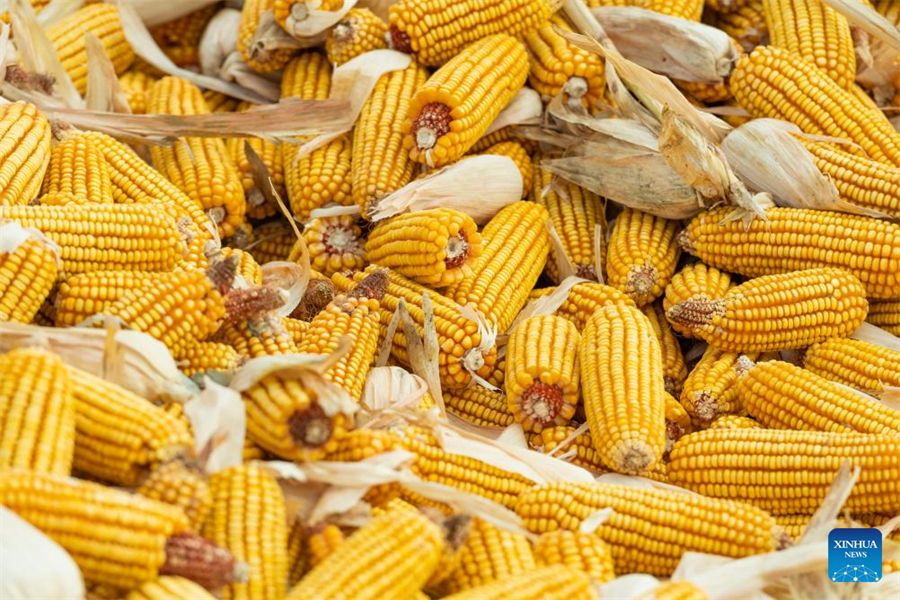How Chinese hold their rice bowls firmly in their own hands

This photo taken on Oct. 19, 2023 shows newly harvested corns at Dongsheng Village of Zhaodong City, northeast China's Heilongjiang Province. China's grain output rose 1.3 percent year on year to a record high of 695.41 million tonnes in 2023, data from the National Bureau of Statistics (NBS) showed Monday. This is the ninth consecutive year for China to register a grain harvest of over 650 million tonnes. [Xinhua/Xie Jianfei]
BEIJING -- China secured another bumper harvest in 2023 despite disruptions from a string of bad weather events.
The country's grain output rose 1.3 percent year on year to a record high of 695.41 million tonnes in 2023, according to data from the National Bureau of Statistics.
This is the ninth consecutive year that China has registered a grain harvest of over 650 million tonnes.
The bumper harvest this year is not easy to achieve, as China experienced a series of bad weather events at home and faced fluctuations in the global grain and agricultural material markets.
How have the Chinese managed to "hold their rice bowls firmly in their own hands?" The following are some key steps China has taken to ensure food security.
-- A top-level design. The Chinese authorities have always put food security high on the government agenda. Ensuring ample grain production has become an important political task for local officials, who are evaluated for their performances regarding arable land protection and expansion, as well as grain production capacity improvement.
-- A strong incentive. The central government continued to raise the minimum purchase price of wheat and rice this year and improved grain subsidy policies for corn and soybean farmers to encourage farmers to grow grain.
-- A timely relief. Facing severe flooding in parts of northern and northeastern China this summer, the central government in August dispatched working groups to guide disaster relief and allocated four batches of relief funds worth 2.92 billion yuan (about 410 million U.S. dollars) to help localities ease the impacts of flooding on production and people's livelihoods.
-- A solid foundation. China has been stepping up efforts to ensure the total area of its farmland does not fall below the red line of 1.8 billion mu (120 million hectares). It is also working to gradually develop all permanent basic cropland into high-standard cropland.
By the end of 2022, the country had developed about 66.7 million hectares of high-standard cropland, helping ensure stable grain production of more than 500 million tonnes.
-- A high-tech booster. China has been working to invigorate its seed industry and improve its mechanization level of grain production.
With the breeding efforts over the past few years, the plantation area of the country's independently bred crop varieties has accounted for more than 95 percent of the country's total.
The comprehensive mechanization rate of the country's wheat, corn and rice production surpassed 97 percent, 90 percent and 85 percent, respectively, with such agricultural machinery increasingly contributing to the high grain yields.
Its rate of mechanization in crop plowing, planting and harvesting has risen from 67.2 percent in 2017 to 73 percent in 2022.
























